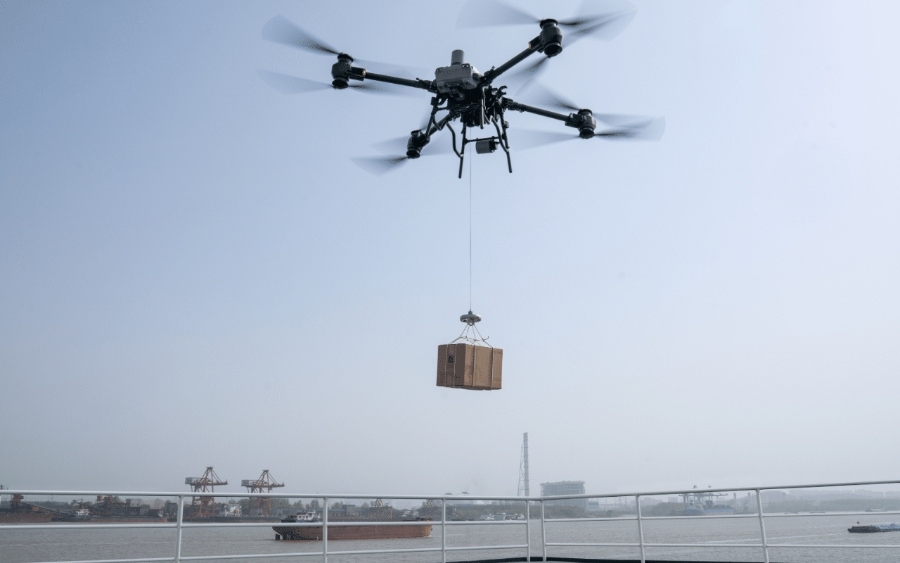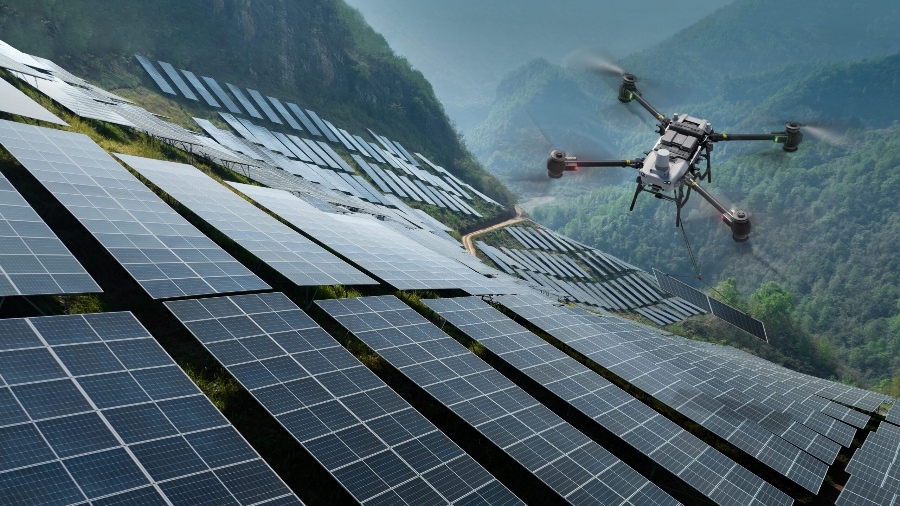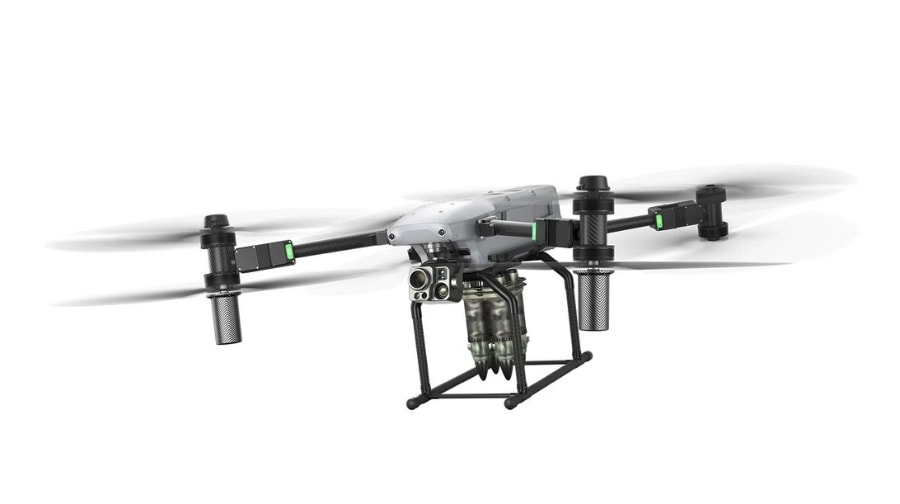Companies Are Making Direct-to-Consumer Delivery Drones—Are People Buying Them?
BY Zacc Dukowitz
16 January 2024DJI’s first ever delivery drone, the FlyCart 30, will soon be for sale in the U.S.
The FlyCart 30 is a big, heavy-lift platform, which can carry as much as 66 pounds for almost 10 miles.

Credit: DJI
When the FlyCart was leaked last summer, our first thought was: Why would DJI want to release a delivery drone? Is there even a market for that?
At the time, we speculated that DJI could be pushing out a delivery model just to compete with the Autel Titan, which is also a big delivery drone—and the first time Autel took a product to market before DJI. (Autel has built a name largely by making drones that go head-to-head with DJI products).
But since the FlyCart 30 launched it’s become clear that DJI definitely wants to carve out space for itself in the direct-to-consumer delivery drone space.
So is this space growing? And who actually uses these drones?
Drone Delivery as a Service vs. Direct-to-Consumer Delivery Drones
Up until recently, when someone talked about drone delivery they meant drone delivery as a service. That is, companies like Wing, Zipline, or Flytrex using their own drones to deliver packages or medicine directly to customers.
In drone delivery as a service, the specific drones and the infrastructure they use don’t matter that much to the customer. It could be drones, or a truck, or an airplane, or a ground-based robot on wheels that delivers your package. Or all of the above. All you care about is getting the package on time.

Credit: Zipline
Zipline has acknowledged this fact in the way it describes itself: Zipline is the world’s largest autonomous delivery system, specializing in on-demand drone delivery and instant logistics.
Notice that the emphasis is as much on instant logistics and autonomous delivery as on the specific technology (i.e., drones) that enable these things.
On the other hand, direct-to-consumer delivery drones and supporting technology are drones made for companies or people to buy directly to use for their own delivery needs. You buy the drone, and you do the delivering.
Most likely, you’re not buying the drone because you plan to set up a delivery service. Instead, you probably want to make deliveries within an operation your business already manages.
For a while now, we’ve been skeptical about there actually being a market for this kind of drone technology. Are there really that many people that need a drone to carry things around for them, we wondered?
But the rise of products like DJI’s FlyCart 30 is seeming to prove that thinking wrong.
Are People Actually Buying These Delivery Drones? And What Do They Use Them For?
When DJI launches a commercial drone it often lists its target applications. The Matrice 350 RTK, for example, is made for public safety, inspection, and mapping.
But in promotional materials for the FlyCart 30, DJI doesn’t share any example industries that might use the technology. The closest we get to that kind of information is in the photos featuring the drone, which show it being used in a shipping container yard and flying over solar panels.

Credit: DJI
The container yard we get.
Direct-to-consumer delivery drones make a lot of sense in a scenario where goods and tools need to be moved around a large, complicated space in which people are working. Following this logic, a warehouse could also make sense.

Credit: DJI
But the solar farm is a little harder to understand. Is the drone delivering equipment to people inspecting the panels? Or maybe sandwiches?
To us, the lack of industry language for the FlyCart 30 means that DJI may be entering territory that is a little unknown. That is, DJI—and others making consumer delivery drones—believe there is a market for these kinds of drones, but they’re not entirely sure yet which sectors will buy them.
U.S.-based A2Z Drones presents some helpful information on this front.
The company is focused exclusively on making consumer delivery drones, and it’s website has case studies for these industries:
- Residential. For offering drone delivery as a service (A2Z’s drones are used by companies like DroneUp to offer drone delivery—though it doesn’t seem like a primary use case).
- Shore-to-ship. This would be those container yard and shipping use cases—carrying goods and packages from ships to shore and back.
- Disaster relief. Bringing emergency supplies to people dealing with crises as they unfold.
- Search and rescue. Bringing medical supplies, food, and gear to people working in the field, often in terrain that may be difficult to navigate on foot.
- Medical. Carrying medical supplies, vaccines, and equipment to medical workers in the field.
A2Z has an impressive list of six different types of delivery drones.
And they’re not cheap. The RDSX Pelican (featured in the video above) starts at $29,000, and its other delivery drones are in this price range, or more. (From what we can find, the FlyCart 30 starts at around $17,000, though official U.S. pricing hasn’t been released yet.)
The Elephant in the Room
Another obvious use case for heavy-lift cargo delivery drones is in military applications. That is, carrying equipment and supplies to people fighting—as well as ammunition.
A fake photo of an Autel Titan—a consumer delivery drone Autel launched last year—carrying what look like grenades recently sparked outrage online.


And, of course, everyone is aware that off-the-shelf drones have been retrofitted to carry bombs and grenades in the war in Ukraine, first by the Ukrainians, and now on both sides of the conflict.
In fact, this was happening so frequently that DJI has stopped selling drones in both Ukraine and Russia, wanting to distance itself from this kind of use.
For now, the future uses of these consumer delivery drones are still a little murky. But it looks like they definitely have some kind of market. A2Z Drones has been growing rapidly, and DJI just brought the FlyCart 30 to the U.S. after an initial launch in China—all signs that there is a strong interest in the platforms.
In the near future, we expect to see even more of these drones come out.
And, just like in drone mapping and other popular drone applications, we expect to see more software coming out to support these kinds of operations. Mitsubishi already has a drone delivery logistics solution called AnyMile—and more like it will probably come out soon.


